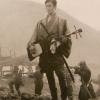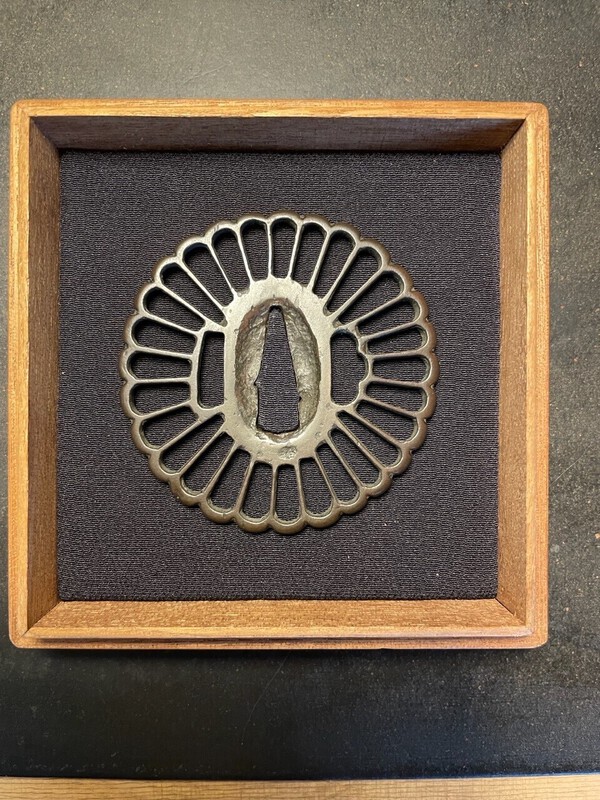Leaderboard
Popular Content
Showing content with the highest reputation on 12/30/2024 in all areas
-
Greetings to All, Recently, I acquired a rather rusty tsuba as part of a deal for a Washida tsuba with another collector. This piece was thrown into the arrangement by the seller to meet the requested price range. Despite its condition, it showed some promise. The tsuba is signed Kyozan Mitsunaka + (Kao) ({嚮山 光中(花押)}) in kin-zogan. Based on the pictures, it appeared to feature brass hira-zogan of peonies and arabesques. Despite the rust, none of the inlays seemed to be missing - testament to the craftsmanship. The subject and execution also align well with works by Washida Mitsunaka or the Washida school. Seeing its potential, I decided to accept the deal, and both tsuba landed on my desk. Believing the piece was worth restoring, I sent it to Manuel @C0D for restoration, and I wasn't disappointed. Manuel did an outstanding job removing the rust and re-patinating the brass. If Manuel would like to elaborate on the restoration process, I would welcome it. The gamble paid off, as the final result is quite pleasing. As you can see, the tsuba has been brought back to life: I hope you enjoy it as much as I do. Regards, Luca P.S. I have to thank Manuel for allowing me to use the pictures he made.12 points
-
12 points
-
I thought some of you might find this interesting. I cannot find a copy of this article online and think that this is as good a place as any to share it. So, without further ado, here is the segment in question from 'Asia' magazine, May 1939, titled 'The Rusty Swords of Japan- A Study in the Death of a Philosophy' by Alan Wilson Watts. Enjoy.5 points
-
200 years ago this shorthand script would have been much more familiar to people. The shorthand script (grass script, kuzushi-ji, etc.) would have been a part of an educated person's upbringing. And, the poems and literature that is often referenced on these items would have been more familiar to (again) educated people. I think the modernization of Japan and standardization of hiragana pushed this kind of calligraphic script out of the mainstream.5 points
-
Hope this helps, I think what you're describing is called "Kami hosoyori Hiramaki Zuka" perhaps? https://www.tsukamaki.net/gallery1.htm I'm not familiar with this website or their services, but it shows a series of different tsuka wrapping styles that hopefully narrows your search. Maybe there's an experienced tsukamaki-shi on the forum who can help clarify. Cheers, -Sam4 points
-
They stated very clearly they know very little. I don't find anything wrong with the video, and kudos to them for sharing the collection. Nothing wrong with people stating they know nothing, and asking for info or taking a stab at it. It's the people who know nothing but argue with advice from people who do know, that get flayed. Rightfully so. Or people who have an opinion on everything except what we actually focus on.4 points
-
K Morita San is not one in ten thousand, but one in a hundred thousand, or even a million!4 points
-
If I can keep messing with Darcy's photographing method and end up with photos that I don't think are terrible, I'll make a post about my tachi.4 points
-
3 points
-
3 points
-
I certainly didn't read it as a reference to a specific person, more a generalisation around some recent and not so recent forum 'contributions' that are giving the NMB an unwelcoming and, can I say aggressive, vibe. The newbies are certainly getting it in the neck and whilst many of the comments and opinions are often valid, it's the delivery that can be tempered. As has been said many times, unless new members are encouraged, guided and supported in a positive way, the forum will eventually decline as the old guard move on, so to speak. Perhaps it's the pressures around Christmas so maybe it's a good moment to step back, take a breather and then return with a refreshed mind. I've really enjoyed @KungFooey's enthusiastic posts, comments and recent acquisitions and it would be sad to see her go especially under these circumstances. Hopefully after a little reflection any departure will be temporary. A no comment thread for people to show their blades would be very welcome. The 'Rai' Kuniyuki tachi is the quality of blade we need to see more of around here.3 points
-
So, my brother actually got the tsuba in hand today and made the following observations. (He just sent me an email Japan time.) It has some active rust around the mimi which will need some ivory work to tone down. The four 'folds' hammered into the steel are 'two up/ two down' in opposite corners so each side mirrors the other, but in reverse. I've included another photo to hopefully demonstrate what I'm trying to explain! Dee3 points
-
What significance does only a partial outline have? [image is very overexposed, the metal is Yamagane] other is from Amazon [Obious copy of the Umetada design] http://nihonto.us/UMETADA TSUBA A.htm A classic Umetada chrysanthemum and a sukashi flower through a amida yasuri plate. Granular tekotsu. 7.5 cm x 7.43 cm x 5.4 mm.3 points
-
3 points
-
Here are a pair of sword guards made by (Shodai) Kawaguchi Hoan in kikugata: 1. 16-petals, matsukawabishi sukashi with sukidashibori featuring kiri-mon, finished in light yakite-kusarashi (signed "Hoan" on the ura). Momoyama Period. 2. 24 petals, two gourds inlaid, one in gold, one in silver. This tsuba is noteworthy for the large nakago-ana present in a relatively small guard. The other tsuba included here is larger than this one, but with a substantially smaller nakago-ana. Momoyama Period.2 points
-
Not especially rare. What makes them special is the metal used is often the same as found in their swords so plain iron is most often seen, sometimes you get mokume, sometimes you see a more elaborate design and of course you often get the same signature as on one of their swords. Originally we are told there were few tsuba makers and so swordmakers had to produce a tsuba, usually a plain flat plate (Tosho), once we enter the Edo period we see more elaborate work and the swordmakers signature (Toko)... -t2 points
-
2 points
-
Google “yokai” and I think you’ll get the idea. Yokai (mythical beings) are very numerous and combine many different body parts from all manner of things that don’t exist. You can have the head of a tiger on the body of a dragon with the tail of a snake with bits covered in fish scales etc etc. Dont try and use Western logic to identify them!2 points
-
2 points
-
Yes, I understand. But that is characteristic of many of the late-war mei. Like Mal said, we have 7 others with this mei, that's just how they look.2 points
-
Bruce and Chris, its an interesting example package of a post-war souvenir, showing the mixed koshirae parts. The kodogu all look to be gilted shingunto, and the habaki silver coated (but poorly made). I would think all that work is post-war refit/upgrade. But as you note unusual for a souvenir Hiratoshi. Looking at the blade I would think it is a wartime work. In the update of Naval Swords Part 2 we looked at Tenshozan closely and have 7 Hisatoshi.2 points
-
Great channel for those who enjoy old military guns. They profess at the start to know very little, no need to be mean.2 points
-
Thank you, Mauro. I have made a donation to the forum as promised. 373 RAN or $20 USD.2 points
-
Full transcription of the relevant part of the paper: 雲龍図鐔 - unryū (no) zu tsuba 鉄地 撫角形 - tetsu-ji nadekaku-gata 銘 早乙女[家]則 - mei Saotome Ienori2 points
-
Personally I think it is best to avoid Ebay, Catawiki, obscure auction houses and Gumtree/Craigslist, especially if you are new to collecting. I've seen FAR better blades recently, with papers, for a similar price on this forum. Ebay, Yahoo.jp/Jauce is a minefield and you'll only get burned... unless very lucky.2 points
-
1 point
-
They had me by "the hammun". Collecting WW2-Era Japanese Samurai Swords - YouTube1 point
-
Okan, These last two tsuba you have posted, and the second in particular, remind me of the "San Diego tsuba" that were recovered from the wreck of a Spanish ship on its way to the Philippines in the year 1600. If you search around the Internet, you'll find some interesting information on this. Jim Gilbert's blog post (Tsuba Kansho) on these tsuba is enlightening, especially since there is a reference to molds uncovered from an early-Edo Period site in Nara. These molds are thought to have been used to cast tsuba in soft metal, such as bronze and yamagane. Your tsuba above appears to be cast, based on certain details such as the mei and the kiku punch marks around the nakago-ana.1 point
-
1 point
-
1 point
-
1 point
-
@Stephen They are one of the big surplus and collectible sellers. https://www.legacy-collectibles.com/1 point
-
Ah! So less common than the usual arrangement but perfectly genuine as a method. All the best.1 point
-
The elephant-headed creature might be a Baku: https://en.wikipedia...iki/Baku_(mythology)1 point
-
Not a bad purchase, I saw this exact item and passed on it just because the design didn't speak to me on first glance but it is a solid pickup. The nanako are pretty good as you have rightfully identified. As for the theme, I had a bit of a look into the piece. It's a tricky one to pin down definitively but I believe it depicts a rat holding some treasure. Rats were a common depiction in the Edo period, however I did find the following which seems to link the rat and its treasure together: https://en.wikipedia.org/wiki/Nezumi_Kozō TLDR; There was a bandit in the late Edo Period nicknamed "Nezumi" (Rat) Kozo who famously burglarised samurai estates and made off with their treasure. He was portrayed in a number of Kabuki plays as a Japanese Robin Hood type character and bandits such as he, or the infamous Goemon Ishikawa were often the subject of theatre or Japanese arts. Had I known this possible backstory for the theme I might have considered bidding on this piece myself as it makes the design a bit more appealing to me. That said, I'm not a huge fan of the dragon and the linework is not of a very high quality in my opinion. It's a very nice and affordable piece for a beginner (unless the price of the auction went up since I last looked), with a possible connection to Japanese folklore or theatre. Looking at something made circa 1850 at the very end of the Edo period. Personally, I think whilst it isn't the highest quality I wouldn't mind a piece like this in my collection for the right price. Of course, this information is still speculative. You should try to see if the mei can be tracked to pre-existing examples from a particular artist or to the school of craftmanship (Mori?) so that the piece can be more accurately dated!1 point
-
Wish I hadn’t used the word “technically”. I’m just used to “old school” thinking. 🙂 I surrender! ….bur…Maybe we talk about sun-nobi Tanto just to cover all bases🙂?1 point
-
No, it was exactly the same mon as the one I’ve posted. It might have been on one of the other forums, like Warrelics or Wehrmacht-awards.1 point
-
1 point
-
Haha, well, a tanto koshirea can be 'aikuchi style' and an aikuchi koshirea can be made for a tanto (which, when the two are combined makes an aikuchi tanto, or simply 'an aikuchi') - but neither implies the other. But that's not what you wrote... What you wrote was - So, technically this is false. A tanto is a tanto with or without koshirea. Meanhile the koshirea is not called 'an Aikuchi', it is called 'an Aikuchi koshirea'. The tanto becomes becomes 'an aikuchi' when mounted in aikuchi style mounts. Similar (but at the same time, opposite) to how a kozuka is a kozuka and a kogatana is a kogatana but a kogatana mounted in a kozuka is a kogatana. Moving on....a tanto is still a tanto while in shirasaya. Lack of a tanto sized tsuba does not change this fact. A tanto is defined as blah blah shaku in length - you know this. Meanwhile, a tanto in aikuchi koshirea is still a tanto. Done1 point
-
1 point
-
Got to say that that collection looks very familiar to me. Sure some cringe moments but nice to view and would just love to work my way through that lot.1 point
-
From the standpoint of antique Japanese swords, this is actually not very old. It is a shinto blade (Shinto meaning 'new sword').1 point
-
Dear Jacques, We are not talking about physics. We are talking about ART. And when it comes to a certain artist you use the name he is known for. And this is Rai Kuniyuki. Token Bijutsu and Meito Zukan use the name. Other publications too. In the end I just want to thank Brano for showing this magnificent sword. The rest is just white noise.1 point
-
What is silly to some is not silly to others. What is a redundant question is not redundant to the person asking it. Surely the point of a Forum is to help and educate everyone especially those trying to make a start in this hobby. What is a horrible blade is also quite probably someones first sword bought with great excitement. The reaction he gets here and how that reaction is delivered could either encourage him or break his spirit. Going forwards this hobby needs all the new blood it can get…..they are the ones who will buy our collections when we leave the planet. …and of course it’s not compulsory to read or reply to topics that are below your pay grade. We all started somewhere.1 point
-
1 point
-
一花 (ikka) on the left side, but the right side is a bit too cryptic. A mix of kanji and hiragana and hentaigana that is tough to crack (for me). Ikka means "one flower", but that doesn't help me figure out the rest. The image looks like a leaf and a gourd. Again, it may be a clue as to the poem/text, but it is beyond me.1 point
-
1 point
-
1 point
-
Hard to tell, could be the start of the Osafune smith signatures "Bishu Osafune xxxx"1 point
-
Thank you Keith. It's as if we are fitting pieces of the subconscious past together here. Just trawling the internet and came up with this blog discussing (a) Satsuma tsuba and the use of the small holes. Generally it covers what we have been discussing, but goes into some interesting detail. It says among other things that there was a strong admonition against drawing one's sword, which once drawn had to kill someone or be used to take your own life. To avoid this, Bushi were actively encouraged to fight with the sword still sheathed inside the scabbard. The holes were called Tsubadome ana, or Sayadome ana, (s)he says. Through them would be passed a length of twisted koyori paper, or a length of string or wire etc. to be attached to the Kurigata. The holes only needed to be large enough to thread paper, string or wire through, so they were very small, especially so at the end of Edo Bakumatsu, when wire was first made widely available. The author clearly distinguishes these from the older and larger Udenuki holes which were used to strap the sword to the wrist on the battlefield and prevent it being dropped. http://blogs.yahoo.co.jp/sayosamonzi/31879732.html 薩摩示現流仕様の鍔は小さい。攻めの流儀だから拳を守る必要を感じなかったからだろう。それに右頭上刀を天に向かって真っ直ぐに立てるトンボという構えを取るとき、鍔が大きいと耳などにさわり邪魔になるからだとも言われている。因みに尾張柳生拵え仕様の鍔も小さい。奇しくも剣術の2大流派で用いる鍔に共通するものがあるというのは興味深い。 薩摩には武士がいったん刀を抜いた時には相手を殺すか自分が死ぬかだからやたらと刀を抜いてはならぬ、事があった時は鞘ごと抜いて戦えという教えがありました。そこで鍔に小さな穴を穿ち、紙縒りや細紐、針金などで栗形に固縛したのです。この穴は鍔の右側に二つあり、鍔止め孔とか鞘止め孔とかいっています。孔の大きさは紙縒りや細紐が通るくらいのもので、針金が流通する幕末になると見つけるのが困難なくらいの大きさになります。因みに鍔の下部に二つの大き目な孔がある物がありますが、これは腕抜き孔と云って戦いの最中に刀を取り落さないように紐を通し手首に巻き付ける為のものです。1 point
This leaderboard is set to Johannesburg/GMT+02:00

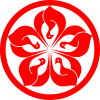




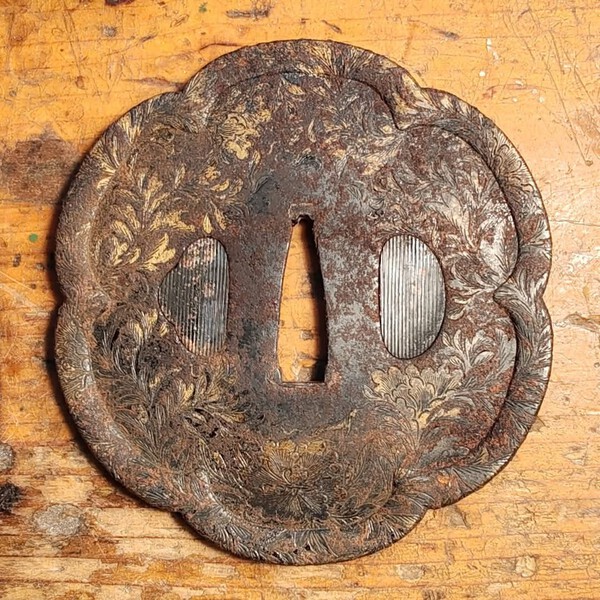


.thumb.jpeg.6b0ead37ac886cdedc956d1638811660.jpeg)
.thumb.jpeg.a92c1bc5340effab4e12e215305125aa.jpeg)
.thumb.jpeg.a60d5a6d35d13dfce4ef30f1d6bc727a.jpeg)

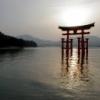
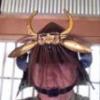
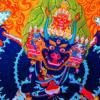
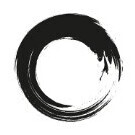
















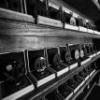

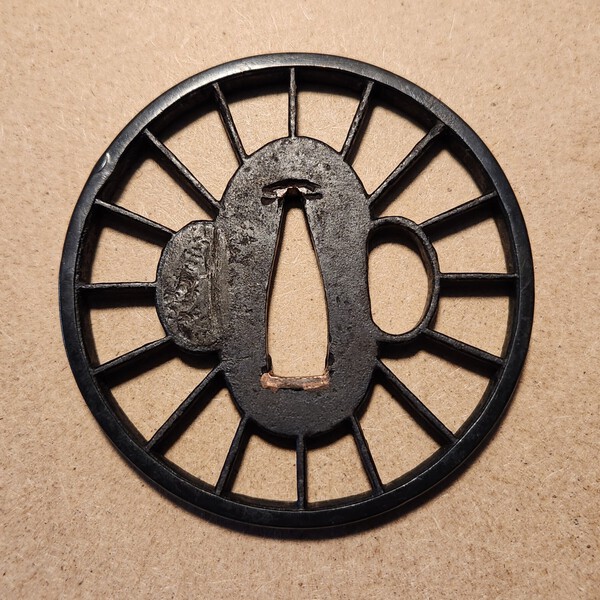

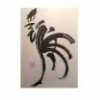
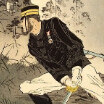





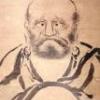
.thumb.png.4c5df79fec171b2dc4a23af38e280a4d.png)





